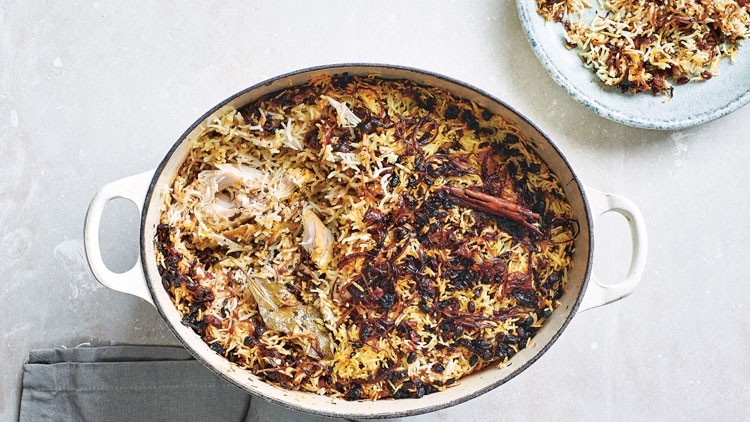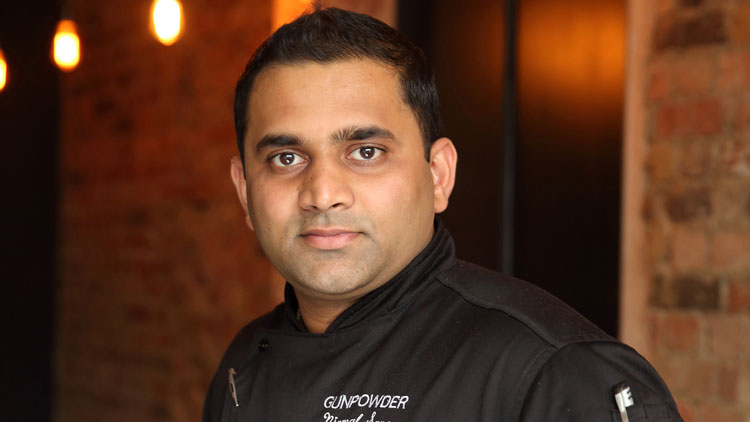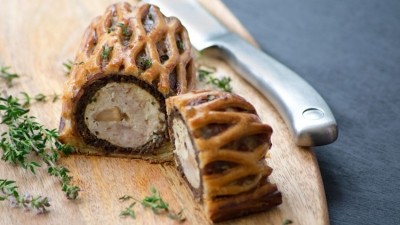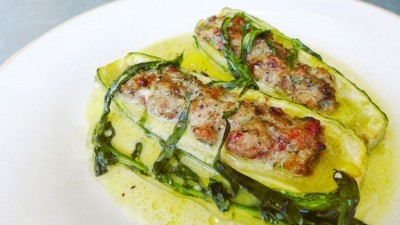Chef Masterclass: Wild rabbit pulao by Gunpowder's Nirmal Save

Pela, pilav, pallao, pilau, pilao, pulaav, palaw, palavu, plov, palov, polov, polo, polu: it is a dish with such a long history, translated from a variety of languages and scripts, and still popular in so many cultures, that such variations are inevitable.
Mentioned in ancient Sanskrit texts, and served to Alexander the Great to celebrate his capture of Samarkand, its first appearance in a cookery book was in 10th-century Persia; since then, it has spread through Central Asia to the rest of the old Soviet Union, to Israel, and even to East Africa and the Caribbean.
Unsurprisingly, it is impossible to pinpoint the dish’s actual birthplace: some scholars claim it started in ancient India and then went to Persia, others that it travelled the other way. However, as a classic one-pot dish that could be rustled up with rice, stock or water, and whatever else was available, it more or less conquered the ancient world, and its popularity shows little sign of waning.
While ingredients and even techniques vary, there is one feature of pulao that distinguishes it from other preparations of rice cooked in broth: the cooked grains of rice need to be perfectly separate. Thirteenth-century Arab recipes call for the rice to be cooked until it is mufalfal ‘peppered’. This is not a reference to spice, but to the appearance of the rice, whose plumped-up grains should be as separate as peppercorns.
At Gunpowder, Harneet Baweja and Devina Seth’s tiny and popular Spitalfields restaurant, head chef Nirmal Save serves a wild rabbit pulao inspired by his mother, Sulu. The family home is in Maharashtra, on the border with Gujarat, “and there’s a massive Parsee population in Gujarat, so there is a lot of influence from Iran on the cuisine”.
This influence includes the use of dried fruit – as well as cranberries or sour cherries, Save often uses dried barberries, a classic sweet-sour flavour in Iranian cuisine – but he stops short of adding toasted nuts: Iranians would add pistachios or almonds, and also cook the pilaf until it formed a much-prized crust – tah dig – on the base of the pan. “But you could add toasted cashews if you like,” he concedes.
To keep the grains separate, it is essential to soak and wash the rice to remove any surface starch and help swell the grains. Save uses long-grained, 12 month-aged Amira rice which he cooks in an Indian version of a courtbouillon, flavoured with cardamom, cloves, cinnamon and bay, then mixed with the cooked rabbit.
“Actually, you don’t have to use rabbit,” he explains. “When wild rabbit is difficult to find, from January to July, you can use farmed rabbit, which is much more tender – wild rabbit over 1 kg tends to be old and tough – so reduce the cooking time by half. Or you might use pheasant when it’s in season, or guinea fowl. It’s a very flexible dish.”
And, should you have leftovers, “you can make Indian arancini with it, like you might with leftover risotto”. Gunpowder’s owner, Harneet Baweja, contributes another idea. “Actually, it’s perfect hangover food for the morning after. Just warm it in a pan and crack an egg over the top.”
Recipe adapted from Gunpowder: Explosive Flavours From Modern India by Harneet Baweja, Devina Seth and Nirmal Save, Kyle Books, £25
Wild Rabbit Pulao, by Nirmal Save
Ingredients
1 whole wild rabbit (approx. 800g), prepared and cut into 5–6 pieces
For the marinade
2 tbsp grated fresh ginger
4 garlic cloves, very finely chopped
4 tbsp Greek yoghurt
1 hot green chilli, fi nely chopped
½ tsp chilli powder
1 tbsp ground turmeric
5 tbsp fi nely chopped mint
5 tbsp freshly chopped coriander
For the pulao
300g basmati rice
100g dried cranberries or sour cherries
3 tbsp vegetable oil
2 tbsp ghee
2 medium onions, thinly sliced
250ml light chicken stock
6 green cardamoms
8 cloves
1 cinnamon stick
1 bay leaf
12 strands of saffron, soaked in 2 tbsp warm water for 10 minutes.
Juice of a lemon
30g chopped mint
30g chopped coriander
Sea salt
2 tbsp garam masala
Method
1. Check over the rabbit and remove any shot. Mix together all the marinade ingredients, place in a large plastic bag, add the rabbit and rub the mixture thoroughly into the flesh. Cover and marinate in the fridge for 6 hours. Bring up to room temperature before using.
2. Put the rice in a bowl, cover with lukewarm water and soak for 30 minutes. Put the cranberries or cherries in a dish and cover with water. Add a pinch of salt.
3. Heat the ghee and 2 tbsp of oil in a sauté pan with a lid over a medium heat. Add the sliced onions and 2 tsp salt. Sauté for about 10 to 15 minutes, until dark brown.
4. Add the rabbit with all the marinade and cook until gently browned all over. Pour in the stock and stir well, then cover with the lid. Reduce the heat and simmer gently for 1 hour.
5. While the rabbit cooks, pour 600ml water into a large saucepan. Add the cardamom, cloves, cinnamon and bay and bring to the boil. Reduce the heat, cover with a lid and simmer for 15 minutes. Add the remaining oil and ½ tsp salt, then drain the soaked rice and add to the boiling water. Cook for 12 minutes or until all the water has been absorbed. Take off the heat with the lid on and let it steam for a further 5 minutes.
6. Check that the rabbit is tender, then take off the heat and mix the rice with the rabbit. Strain the cranberries or cherries and stir through the dish with the saffron and its soaking water. Season with salt, stir in the lemon juice, mint and coriander, and serve.
















